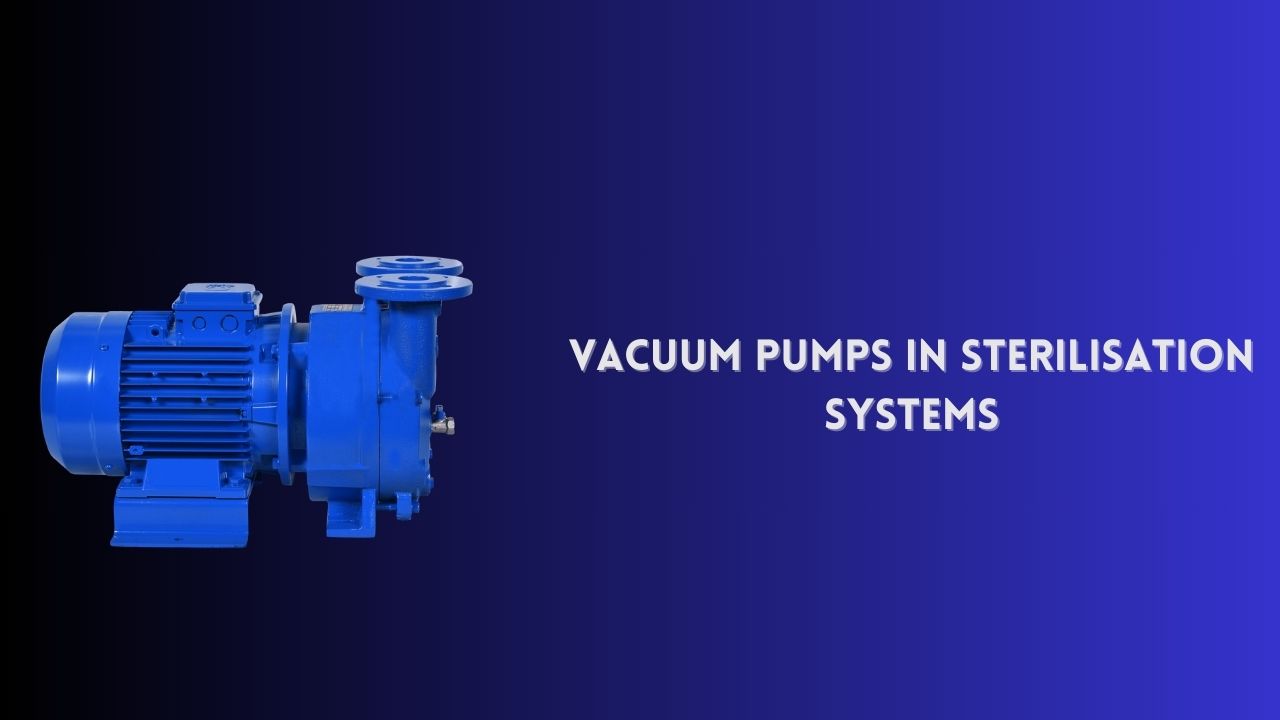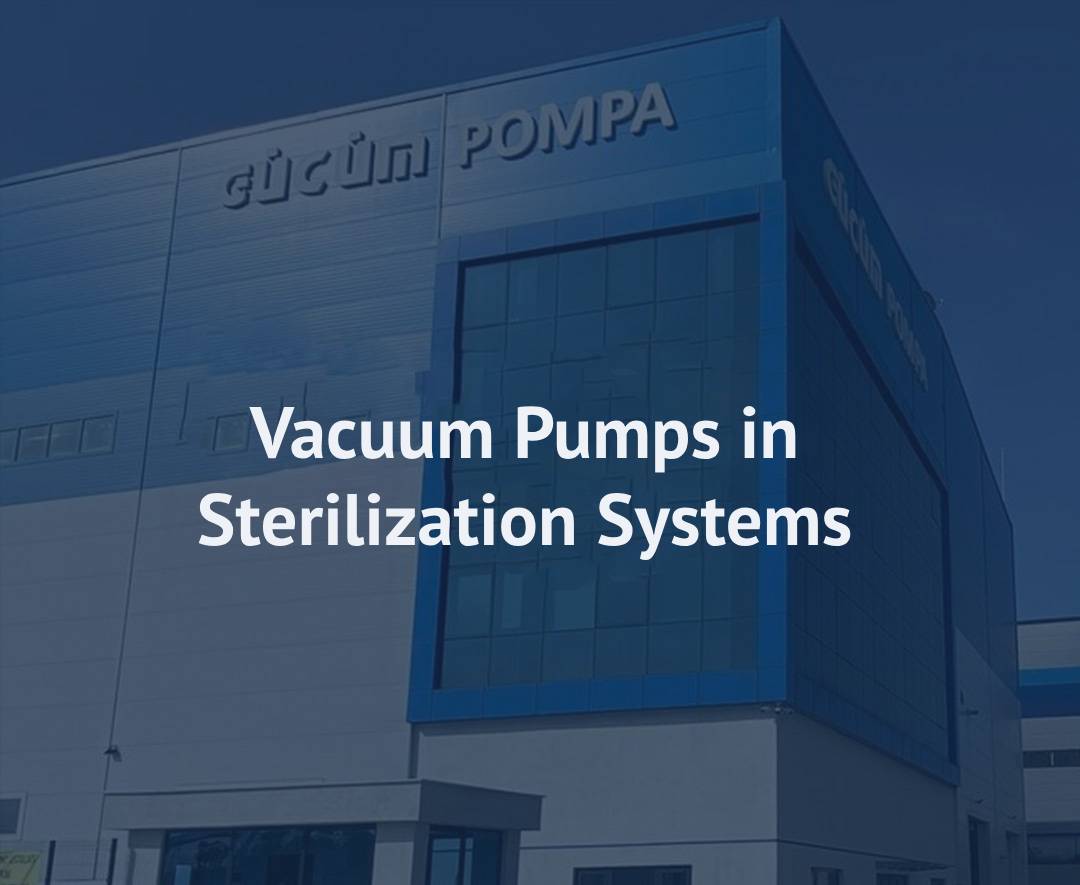Vacuum Pumps in Sterilization Systems
Sterilization is a critical step in industrial and scientific processes. Especially in fields such as healthcare, food, and biotechnology, the elimination of microorganisms is crucial for product safety and effectiveness. Sterilization processes ensure the complete destruction of microorganisms, guaranteeing the safety and quality of products. Among the critical components used in these processes, vacuum pumps play a vital role in enhancing the efficiency and effectiveness of sterilization. The use of vacuum allows sterilization agents to work more quickly and effectively. In this article, we will explore in detail how vacuum pumps work in sterilization systems, their advantages, and where they are used.
The Role of Vacuum in Sterilization Processes
Vacuum plays a significant role in sterilization processes by facilitating the rapid elimination of microorganisms and enhancing the effect of sterilization agents. Under vacuum, the pressure in the environment is reduced, which increases the temperature and the effectiveness of chemical agents. This allows sterilization agents to penetrate the cell structure of microorganisms more quickly. Furthermore, vacuum removes air from the sterilization chamber, ensuring a more uniform temperature and distribution of chemicals. The effect of vacuum significantly accelerates the sterilization process and improves its efficiency.
Under vacuum, the boiling point of gases decreases, which increases the evaporation rate of liquids. This property is especially beneficial for processes requiring sterilization at low temperatures. For instance, sterilization of biological samples or sensitive food products can be achieved more efficiently under vacuum, as it enables sterilization at lower temperatures. This property ensures that materials that might be damaged by high temperatures can still be safely sterilized, thus improving the overall quality and efficiency of the sterilization process.

The Role of Vacuum Pumps in Sterilization
Vacuum pumps are one of the fundamental components in sterilization systems. In the sterilization chamber, air is evacuated and replaced by sterilization agents or steam. This process accelerates the sterilization and enhances its effectiveness. Vacuum pumps work by removing unwanted air molecules from the sterilization chamber, allowing sterilization agents to spread more uniformly. The even distribution of sterilization agents ensures that all surfaces are treated effectively, leading to safer and more hygienic products.
Additionally, vacuum pumps help maintain precise control over the temperature and pressure levels required for sterilization. The proper temperature and pressure are crucial to ensure that microorganisms are effectively killed. Vacuum pumps assist in maintaining these parameters, thereby increasing the effectiveness of the sterilization process. The use of vacuum also ensures that sterilization agents are evenly distributed, which leads to deeper and more thorough sterilization.
Methods of Sterilization Using Vacuum
Vacuum is an important tool in various sterilization methods. Sterilization can be achieved using steam, dry heat, or chemical agents. The role of vacuum varies in each method, but in general, the use of vacuum improves the effectiveness of sterilization. Below are some of the sterilization methods where vacuum plays a crucial role:
-
Autoclave Sterilization: Autoclave sterilization is a steam-based sterilization method. In this process, vacuum is used to remove air from the sterilization chamber, creating a pressurized environment that enhances the spread of steam. This allows sterilization agents to kill microorganisms more quickly. Autoclave sterilization is commonly used for medical instruments and equipment. Vacuum increases the effectiveness of this process, ensuring safe sterilization.
-
Dry Heat Sterilization: In dry heat sterilization, vacuum is used to control the flow of air and the distribution of heat. Vacuum helps to spread hot air more uniformly, which enhances the effectiveness of the sterilization process. This method is primarily used for sterilizing metal and glass materials.
-
Chemical Sterilization: Chemical sterilization involves the use of gases like ethylene oxide to kill microorganisms. Vacuum is employed to evacuate the air, ensuring that these gases spread more evenly and penetrate effectively. This method is often used for sterilizing sensitive medical devices.
-
Lyophilization Sterilization: Lyophilization, also known as freeze-drying, uses vacuum to accelerate the evaporation of liquids. Vacuum in this process allows for faster drying, which is crucial for the preservation of biological samples and long-term storage of food products.
Types of Vacuum Pumps Used in Sterilization Systems
Vacuum pumps come in various types, each suited for specific sterilization processes. Each type of vacuum pump offers different advantages depending on the requirements of the sterilization system. The most commonly used vacuum pumps in sterilization systems include the following:
-
Rotary Vacuum Pumps: Rotary vacuum pumps are commonly used in small to medium-sized sterilization systems. These pumps are highly efficient, providing excellent air evacuation and quick evacuation times. They are often used in autoclaves and other small-scale sterilization systems.
-
Roots Vacuum Pumps: Roots vacuum pumps are typically used in large sterilization systems. These pumps provide high-volume vacuum and are suited for industrial sterilization applications. Roots pumps allow for faster sterilization cycles, improving overall production efficiency.
-
Scroll Vacuum Pumps: Scroll vacuum pumps are used in applications that require precise control and low noise. These pumps are energy-efficient and work well in environments where noise reduction is important. Scroll vacuum pumps are often used for sterilizing medical devices and delicate equipment.
-
Molecular Vacuum Pumps: Molecular vacuum pumps are designed for applications requiring ultra-low vacuum levels. These pumps are used in highly sensitive sterilization processes, such as in biotechnology and pharmaceutical manufacturing, where precision and low pressure are essential.
Advantages of Using Vacuum in Sterilization Systems
Using vacuum in sterilization processes offers several key advantages. Here are some of the main benefits of vacuum in sterilization:
-
Faster and More Efficient Sterilization: Vacuum accelerates the sterilization process by enhancing the spread of steam and sterilization agents. This leads to shorter sterilization cycles and allows for quicker processing, which is crucial for industrial-scale production.
-
Higher Effectiveness: Vacuum increases the effectiveness of sterilization agents. The reduced pressure allows sterilization agents to work more rapidly, increasing the rate at which microorganisms are eliminated. This results in higher disinfection rates and more effective sterilization.
-
Energy Efficiency: Vacuum systems tend to consume less energy compared to other methods. Since vacuum operates at lower pressures, energy consumption is reduced. This helps lower energy costs and supports sustainable production practices in industrial environments.
Conclusion
Vacuum pumps are essential components in sterilization systems, playing a crucial role in eliminating microorganisms and ensuring product safety. Vacuum enhances the speed, efficiency, and effectiveness of sterilization processes by improving the distribution of sterilization agents and controlling temperature and pressure levels. The use of vacuum also leads to energy savings and supports more sustainable production processes. The careful maintenance and selection of the appropriate vacuum pump type for each sterilization system is essential for maximizing efficiency and ensuring optimal sterilization outcomes. Overall, vacuum use in sterilization systems is a key factor in achieving high-quality, safe, and effective sterilization results.
